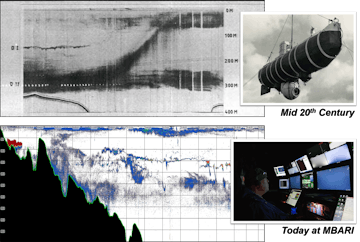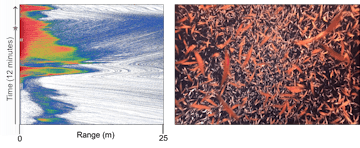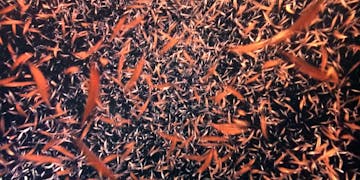
The deep scattering layer was found using sonar in the 1940s. Visual observations from human-occupied submersibles later found the layer to be made up of a large number of small animals. The technologies for both acoustics and in situ visualization have progressed dramatically in the decades since; however, the techniques have only rarely been used together, largely due to the technical challenges of each approach. MBARI is poised to exploit the strengths of a truly integrated acoustic-imaging approach in investigations of animal life in the water column.

A patch of krill was measured acoustically at long range (shown here at eight meters depth but first observed at more than 50 meters depth) and then observed from within the swarm, providing both acoustic and visual measures of the density of the patch, acoustic measurements of the patch’s extent, shape, and internal organization, and visual observations of the species forming the group. Using the acoustics and imaging together, the team measured the distribution of individual krill length. Neither the acoustics nor imaging could have given a complete picture of the swarm independently. For swarms of this physical scale (less than 10 meters across), even coordinated platforms with independent sensors would have been challenged to obtain matching data sets.

Drawing of the acoustic system that will be integrated into the i2MAP imaging vehicle in 2018.The positioning of the transducers is optimized for a combination of vehicle stability, avoidance of interference between instruments, and overlap between imaging and forward-looking acoustic systems.
